Practicing balance exercises for stroke patients can improve your gait (manner of walking), coordination, and stability.
A stroke typically affects one side of the body. While the unaffected side may function normally, the lack of bilateral coordination can impair your balance.
Luckily, balance skills can be recovered through repetitive training. By practicing balance rehab exercises, you’ll encourage the brain to rewire itself and strengthen connections to affected muscle groups.
What exercises should you be practicing to regain balance after stroke? Let’s find out!
Effective Balance Exercises for Stroke Patients
Balance is a full-body activity that requires coordination between your upper and lower body.
Here are some of the best balance exercises for stroke patients:
1. Hip External Rotator Stretch

This balance exercise is great for stroke patients of all ability levels, including those with post-stroke paralysis.
Start this warm-up by sitting near the edge of your seat. Then, bring your affected leg over your non-affected knee. Gently lean forward. The more you lean forward, the more you’ll feel the stretch in your hip. Hold for 15-20 seconds.
This balance exercise will help promote hip range of motion and engage your core; and more core stability helps with balance.
2. Hip Flexions
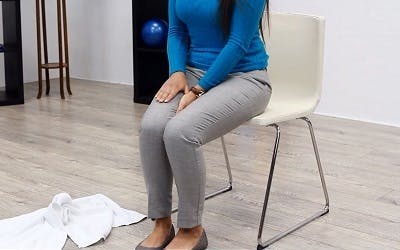

Here’s another balance exercise that’s useful for patients of all ability levels.
Start by sitting on the edge of your seat. Then, lift your affected leg. If you struggle with leg mobility, you can use your arms for assistance.
Hold for a second and then lower the leg back down. Repeat 10 times. For the next set, hold your leg up for 3 seconds each and repeat 10 more times.
3. Sit-to-Stand
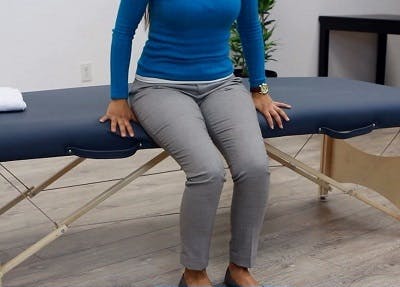

This exercise will help you develop both sitting and standing balance after stroke.
Sit with your legs shoulder-width apart and make sure that your feet are positioned slightly behind the knees.
Slowly transition into a standing position, hold your balance for a few seconds, and then sit back down. Feel free to use your arms for additional support as you go up and down. Repeat 10 times.
To make it more challenging, add resistance by holding something heavy in between your hands.
4. Isometric Back Extensor Holds

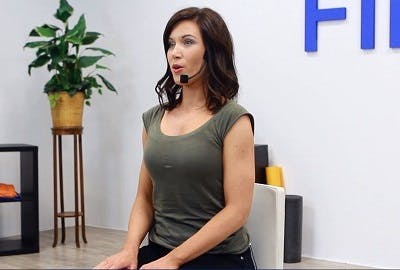
This balance exercise for stroke patients is ideal if you’re looking to target the trunk muscles.
Sit on the edge of your seat and gently press your back against the chair. You should feel the muscles in your back contracting.
Hold for a few seconds and then bring your body back to an upright position.
Make sure that your back is straight as you come back up. Repeat 10 times.
5. Lateral Trunk Flexion


Post-stroke paralysis can cause trunk stiffness. This stretch can help improve posture, which can help enhance balance.
While seated, tilt your right shoulder down towards your right hip.
You should feel the stretch on the left side of your trunk. Hold for 10 seconds. Then, repeat on the other side.
6. Leg Lifts
For this balance exercise, stand and use a chair to help keep you balanced. Lift one leg to the side and hold for 5 seconds. Once you find your center of gravity, try to balance without leaning on the chair.
If you have limited mobility, avoid doing this exercise until you are ready; and be sure to have a caregiver present if you decide to give it a try. Safety first.
7. Seated Marching
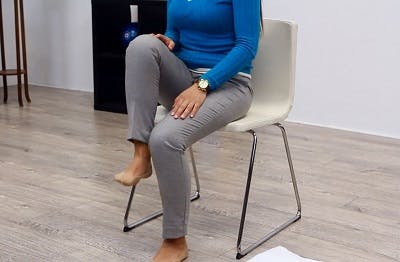
Seated marching is an excellent way to develop balance skills after stroke because it forces the upper and lower body to work together.
Start off by sitting on the edge of your seat with your back completely straight. Then, alternate lifting your knees as high as you can. Try to avoid leaning back to fully engage the core.
You have to constantly adjust your center of gravity in your upper body to balance out movements in your lower body.
Practice for about 30 seconds. For the best results, focus on your posture rather than speed.
8. Hip Abduction Side Kicks
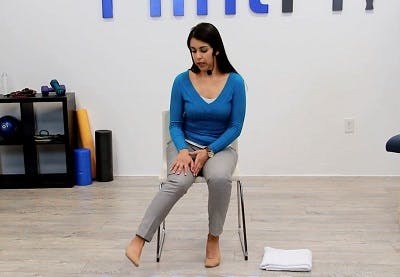

This simple balance exercise for stroke patients focuses on side-to-side movements, which can help improve range of motion.
First, sit with your legs shoulder-width apart. Then, slightly raise your affected foot off the ground. You’ll almost immediately start to feel the pressure it places on your core and leg.
Kick your leg out to the side and then bring it back inwards. Repeat 20 times.
9. Toe Raises
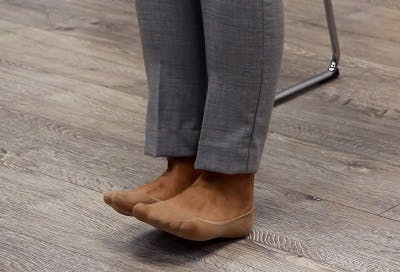
Coordination in the feet is critical for improving your balance after stroke, and this exercise will help.
Start standing while using a chair or countertop to help keep you balanced. Slowly lift your toes up and lean back on your heels. Hold for a few seconds and then repeat 20 times.
Notice how when your lower body leans back, you have to balance it out by positioning your upper body forward.
For another variation of this exercise, lift your heels instead of your toes and lean forward on the balls of your feet.
10. Wide-Based Gait Training
Wide-based gait training is the perfect balance exercise for stroke patients who want to improve their walking ability.
Stand with your legs far apart. A wider stance creates a more stable base to balance on.
Practice walking with this stance until comfortable. Then, gradually narrow the distance between your legs.
This is a great way to improve your gait without mobility aids.
11. Trunk Circles
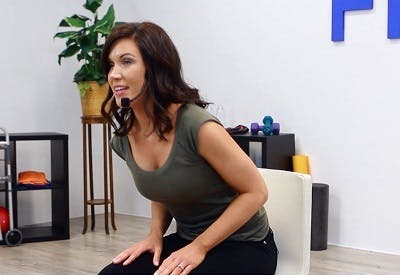

Trunk circles encourage you to engage various muscles in your upper body without moving your lower body, which makes it a great exercise for improving balance after stroke.
While seated, move your torso clockwise in circular motions. Focus on engaging your core muscles and feel free to use your hands for additional support.
Repeat 10 times and then change directions (counterclockwise).
12. Tightrope Walk
This balance exercise for stroke patients will help you develop better control over your steps.
Place a long (7 or so feet) piece of tape or several shoelaces on the floor to create a straight line.
Follow the guide with heel-to-toe steps.
Try to keep your head facing ahead rather than down on the ground.
13. Forwards Punches


If you have enough core strength to sit upright without using your arms, try this balance exercise!
While seated, spread your arms out in front of you and clasp your hands together. Gently, lean forward as far as you comfortably can and use your back muscles to return to an upright position. Repeat 10 times.
To make this exercise more challenging, reach down towards the floor.
Also, try leaning diagonally to target the sides of your trunk.
Recovering Balance After Stroke
Because balance is learned so early in life, we often fail to realize what a significant role it plays in our day-to-day lives until we lose it.
Poor balance can increase your risk of falling and make simple activities like getting out of bed extremely difficult.
Therefore, it’s essential to practice balance boosting exercises to maximize your quality of life after stroke.
Don’t worry if you can’t perform some of these balance exercises right away. Balance takes time to develop, so focus on what you can do and make adjustments that work for you.
Through consistent practice, you can stimulate the neurological changes necessary to recover balance after stroke. Good luck!

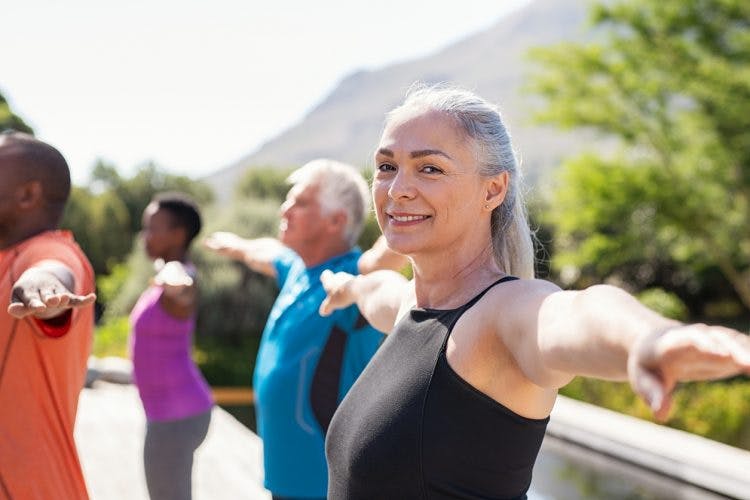


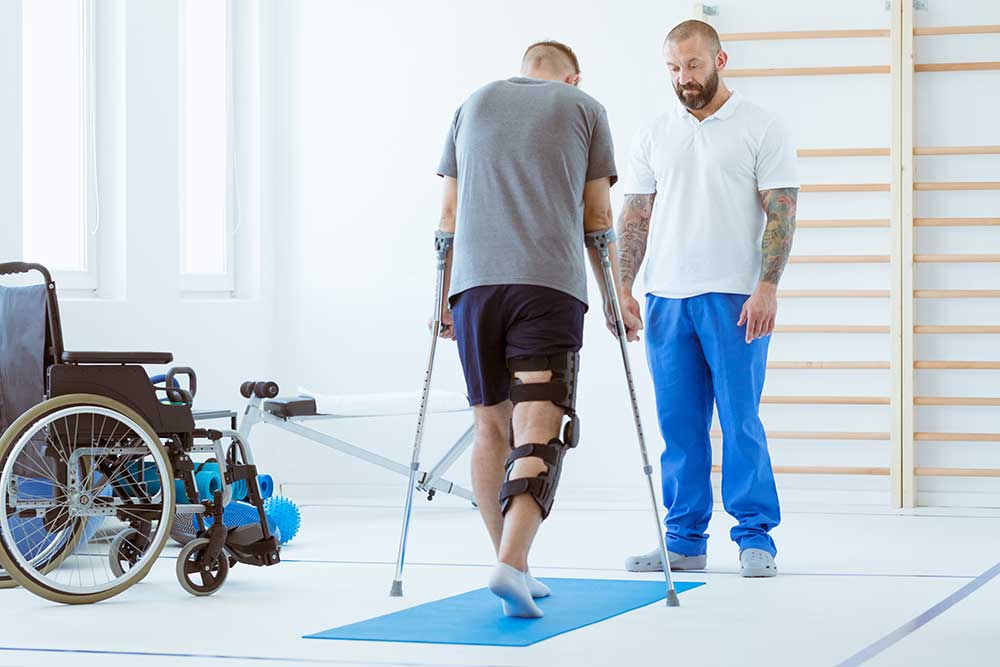
Customer Reviews
Thanks for submitting your comment!